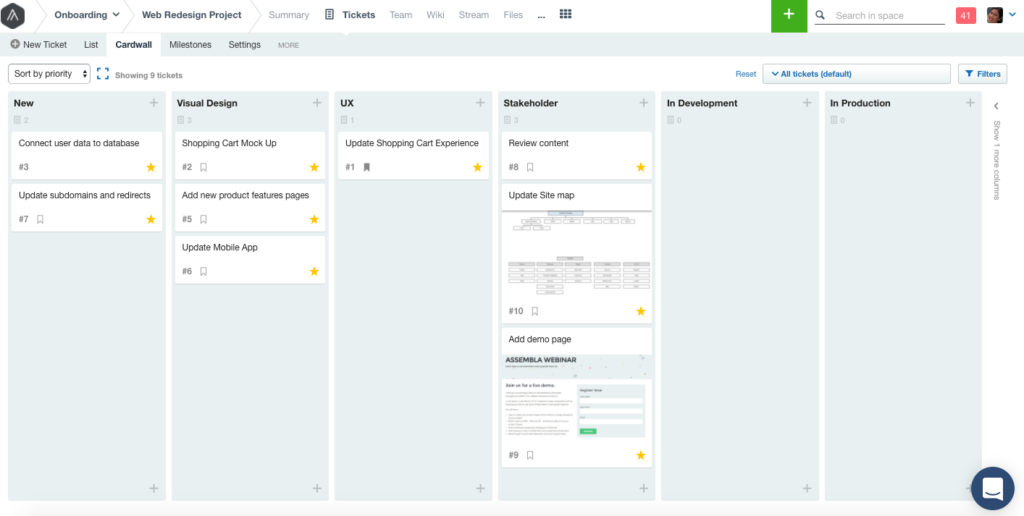
For developers, time is always in demand. We’re scarce resources: everyone in the world loves and needs our skills. As much as we want to make time for coding projects “here and there,” we simply can’t. We need to say no.
But sometimes, saying no is awkward.
We feel bad. We really want to help even though we just don’t have the time. We want to put in the extra effort. We want to put in the extra time. But then, chaos ensues – statistically speaking. In 2012, only 39% of projects were completed on time, on budget and with all features and requirements, according to The Standish Group’s CHAOS Manifesto. By 2015, that had fallen to 29%. And by 2020? That was only 16.2%.
In order to have the best chance of success for their projects, software development teams need to keep a lid on change orders, feature requests, technology suggestions and interface redesigns – all the fascinating possibilities that could make the project greater or break it completely.
Evaluating these possibilities to determine which ones are worthy is an art and a science. Once you’ve made that determination and have decided you must say no, how you say it can make all the difference.
These four research-based strategies will help you appeal to that human brain and heart behind the request and say no in ways that feel nicer.
You can modify this effective-management technique that suggests that bosses give negative and positive feedback in a ratio of five to seven (you know, like happy hour). It’s based on psychologist John Gottman’s research on happy marriages. He found that happy couples fought as much as unhappy ones did; the difference was that among the happily married, the ratio of positive to negative interactions was much higher.
What does this mean for you, harassed developer? It means that the more positive interactions you have with your managers or clients – and, especially, the more times you can say yes — the more likely it is that they’ll be willing to consider your opposition.
First, pick your battles. Before you say no to a request, make sure you really need to. Scour any negatory habits from your daily interactions. Second, amplify all the times when you already say yes. Instead of “okay,” emphasize your affirmation with a few extra positive words, such as, “Yes, I can definitely do that.”
It’s so easy to fall into that beleaguered, us-against-them mentality. Even if you feel that way, use language that reminds the other person that you’re in it together, says Nick Kolenda, author of Methods of Persuasion. He cites research showing that the use of the pronoun “we” makes people feel more positive about information they hear. In other words, make the people who come to you with requests feel like collaborators, not opponents. So, instead of saying, “I can’t do what you want,” position it as a shared problem: “If we’re trying to accomplish our goal, this isn’t the best way to do it.”
In that light, Kolenda suggests you use words that express cooperative behavior. For example, “Let’s brainstorm for a minute,” or, “Can we work together to find another approach?”
To learn why taking a collaborative approach can make your team and the whole company more productive, read 5 Studies to Help Software Development Teams Communicate Better.
Our brains process visual information and auditory information – things we see and things we hear – in different ways. Moreover, it’s easier for us to remember info that’s presented pictorially than things we’re told. That’s why collaboration or project-management tools can be useful when you’re asked to do something outside of scope, for example, or something that may delay the project.
Sumit Bansal, founder of training platform Trump Excel and a freelance VBA developer, says, “Scope creep is a real threat, and the only way to tackle is to have the scope sealed. In case the client comes back with some new requirement, you can politely suggest to first complete the tasks as agreed upon, and then the new work can be taken on.”
In the best of all possible worlds, collaboration tools like Assembla, with their visual timelines and milestones, would let the client or manager see the project status and impact of a potential change request ahead of time. In the real world, developers can use these tools to go over existing tickets with managers and clients to discuss how the new item might fit in and what the effects would be.
In Assembla’s cardwall view, you can create customized ticket statuses. Below you can see “Stakeholder Review,” where clients can easily see what is pending as well as all other issues related to the overall project.

Even if you’re generally accommodating and willing to say yes, the few times when you have to say no may loom out of proportion to managers or clients. That’s because our brains pay a lot more attention to negative words than to positive ones. This was no doubt useful in prehistoric times, when we need to respond to adverse situations by running away before we got eaten. Today, it can make simple interactions feel more fraught than they need to.
In fact, negative words may actually shut down higher-level mental processes – those processes that involve thinking logically and rationally. This means that your client may have a hard time hearing your very good reasons why it’s a bad idea, not feasible or outside the scope of the project.
There are plenty of workarounds to an outright no. Job Brown, web team leader at Interior Goods Direct, suggests finding some middle ground between your position and theirs. “There may be something slightly different which is easier to implement and still meets a lot of the client’s requirements,” he says. Some positive reinforcement helps, as well. “If you believe they do have a good idea that may not be a good fit at the present moment, make sure you tell them. Ask them to remember it, and to come back to it in the future.”
These tactics encourage you to interact with others in more positive and collaborative ways. If you use these tactics, you may find that your workflow improves and projects are more successful, thanks to your ability to firmly but kindly say no when necessary.
You may find another personal benefit, beyond the satisfaction of a good project completed well. Positive emotions boost your immune system, so you’ll be able to tackle your work more effectively. And, because research shows that being kind to others makes you feel better, you may feel a little happier, too.
